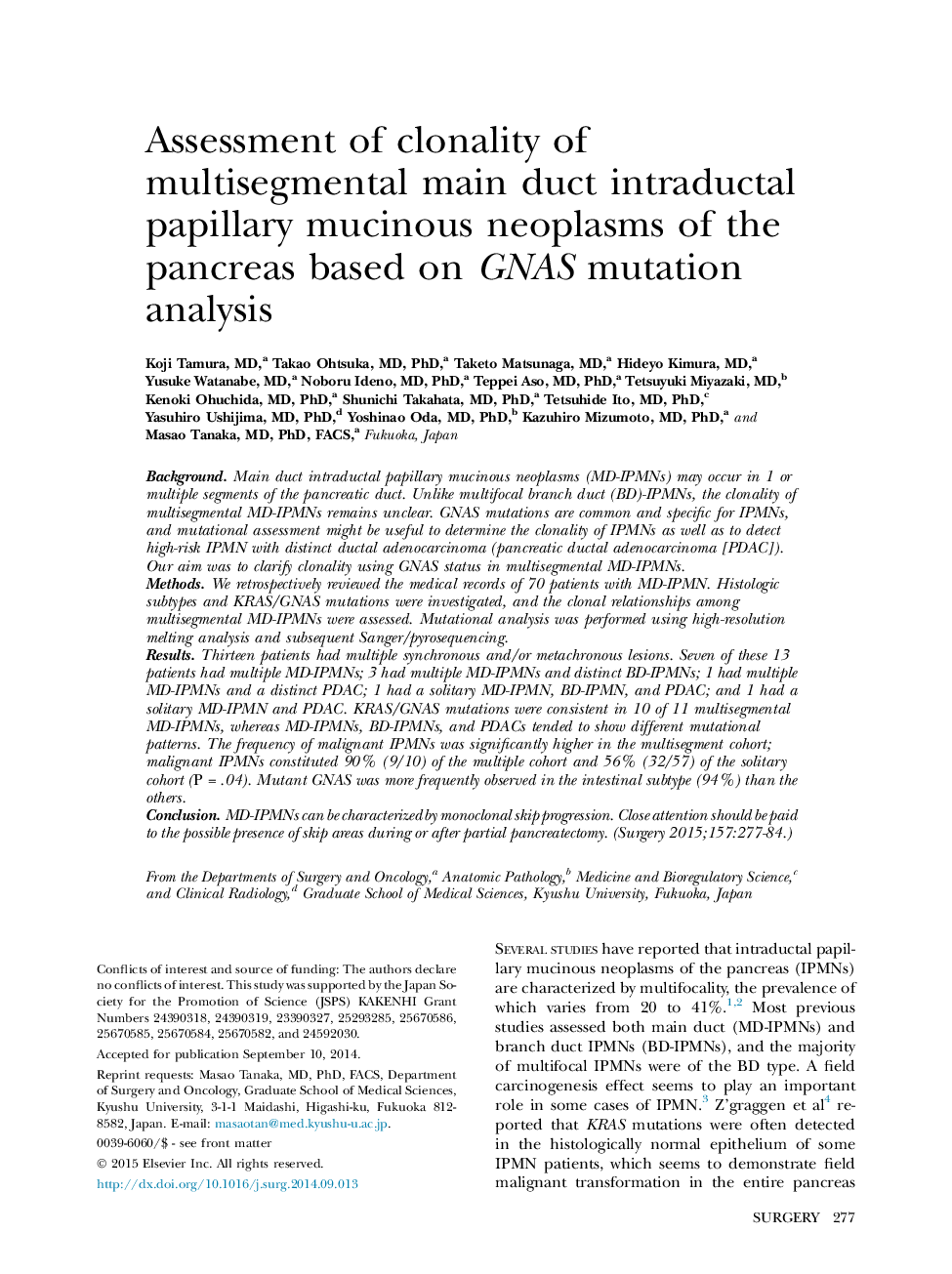| Article ID | Journal | Published Year | Pages | File Type |
|---|---|---|---|---|
| 6255477 | Surgery | 2015 | 8 Pages |
BackgroundMain duct intraductal papillary mucinous neoplasms (MD-IPMNs) may occur in 1 or multiple segments of the pancreatic duct. Unlike multifocal branch duct (BD)-IPMNs, the clonality of multisegmental MD-IPMNs remains unclear. GNAS mutations are common and specific for IPMNs, and mutational assessment might be useful to determine the clonality of IPMNs as well as to detect high-risk IPMN with distinct ductal adenocarcinoma (pancreatic ductal adenocarcinoma [PDAC]). Our aim was to clarify clonality using GNAS status in multisegmental MD-IPMNs.MethodsWe retrospectively reviewed the medical records of 70 patients with MD-IPMN. Histologic subtypes and KRAS/GNAS mutations were investigated, and the clonal relationships among multisegmental MD-IPMNs were assessed. Mutational analysis was performed using high-resolution melting analysis and subsequent Sanger/pyrosequencing.ResultsThirteen patients had multiple synchronous and/or metachronous lesions. Seven of these 13 patients had multiple MD-IPMNs; 3 had multiple MD-IPMNs and distinct BD-IPMNs; 1 had multiple MD-IPMNs and a distinct PDAC; 1 had a solitary MD-IPMN, BD-IPMN, and PDAC; and 1 had a solitary MD-IPMN and PDAC. KRAS/GNAS mutations were consistent in 10 of 11 multisegmental MD-IPMNs, whereas MD-IPMNs, BD-IPMNs, and PDACs tended to show different mutational patterns. The frequency of malignant IPMNs was significantly higher in the multisegment cohort; malignant IPMNs constituted 90% (9/10) of the multiple cohort and 56% (32/57) of the solitary cohort (PÂ =Â .04). Mutant GNAS was more frequently observed in the intestinal subtype (94%) than the others.ConclusionMD-IPMNs can be characterized by monoclonal skip progression. Close attention should be paid to the possible presence of skip areas during or after partial pancreatectomy.
